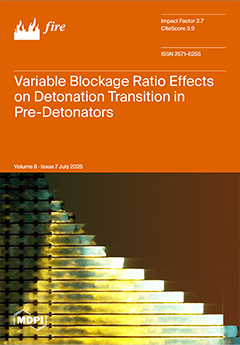Firefighting is a physically, mentally, and emotionally demanding occupation. These demands are exacerbated by an increase in workload, resulting in an increase in stress and a decrease in recovery. While researchers have examined the influence of workload on stress perceptions, little is known
[...] Read more.
Firefighting is a physically, mentally, and emotionally demanding occupation. These demands are exacerbated by an increase in workload, resulting in an increase in stress and a decrease in recovery. While researchers have examined the influence of workload on stress perceptions, little is known about firefighter perceptions of recovery generally, and no research investigating perceptions of holistic recovery (i.e., physical, mental, and emotional) exists. The purpose of this study was to determine the association between acute workload (i.e., call volume) and firefighter perceptions of stress and recovery from pre-shift to post-shift. Sixteen active-duty firefighters completed the Short Recovery and Stress Scale pre- and post-shift and reported call volume after every shift (
N = 156 total shifts). Repeated measures correlations were used to examine the common intraindividual associations between pre- to post-shift perceptions of recovery and stress and call volume. Results indicated that as call volume increased, firefighters perceived themselves to be significantly less recovered overall [
rrm (139) = −0.22,
p < 0.001], physically [
rrm (139) = −0.31,
p < 0.001], mentally [
rrm (139) = −0.26,
p < 0.001], and emotionally [
rrm (139) = −0.27,
p < 0.005] and significantly more stressed overall [
rrm (139) = 0.28,
p < 0.001], mentally [
rrm (139) = 0.25,
p < 0.005], and emotionally [
rrm (139) = 0.21,
p = 0.012] post-shift compared to pre-shift. These findings suggest that to optimize firefighter health and well-being, practitioners should monitor call volume and implement appropriate physical, mental, and/or emotional recovery interventions.
Full article





